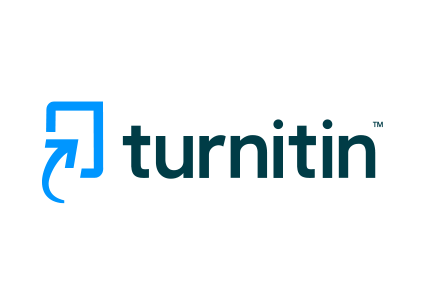THE INTERACTION OF PROBLEM BASED LEARNING AND COGNITIVE STYLES ON STUDENTS’ MATHEMATICAL CREATIVE THINKING ABILITY
Keywords:
interaction, problem based learning, cognitive style, mathematical creative thinking, field independent, field dependentAbstract
This study examines the interaction between the Problem Based Learning (PBL) model and students’ cognitive styles in influencing mathematical creative thinking ability. A quasi-experimental design with a 2×2 factorial arrangement was employed, involving third-semester students of the Mathematics Education Department at Universitas Sebelas April. The experimental group (23 students) received instruction through PBL, while the control group (22 students) learned through conventional methods. Instruments included a mathematical creative thinking test and the Group Embedded Figures Test (GEFT) to identify Field Independent (FI) and Field Dependent (FD) styles. The results indicate three key findings: (1) PBL significantly outperforms conventional learning in enhancing mathematical creative thinking; (2) students with FI style show higher creative thinking scores compared to FD students; and (3) a significant interaction exists between learning model and cognitive style. Notably, PBL proves more effective for FI learners who benefit from its analytical and problem-oriented approach. These findings suggest that integrating PBL with consideration of students’ cognitive styles can better foster mathematical creative thinking. Lecturers are encouraged to design instruction that adapts to cognitive diversity, ensuring optimal learning outcomes in mathematics education.
References
Arifin, S. (2020). The Effect of Problem Based Learning by Cognitive Style on Retention and Critical Thinking Skills. JOTSE.
Bron, J. F., & Prudente, M. (2024). Examining the effect of Problem-Based Learning approach on enhancement of creative mathematical thinking. ERIC.
Creswell, J. W. (2014). Research Design: Qualitative, Quantitative, and Mixed Methods Approaches (4th ed.). Thousand Oaks, CA: Sage.
Fitriani, E., & Hidayat, W. (2023). Influence of problem-based learning on students’ creative mathematical thinking based on cognitive style. Jurnal Didaktik Matematika, 10(1), 14–27. https://doi.org/10.24815/jdm.v10i1.28156
García-Ros, R., Pérez-González, F., & Pérez-Blasco, J. (2021). Relationships between field dependence/independence and mathematical problem-solving. Frontiers in Psychology, 12, 664212. https://doi.org/10.3389/fpsyg.2021.664212
Hasibuan, A., & Suryadi, D. (2019). The impact of problem-based learning on students’ creative mathematical thinking ability viewed from cognitive styles. Infinity Journal, 8(2), 153–162. https://doi.org/10.22460/infinity.v8i2.p153-162
Hidayat, W., & Sumarmo, U. (2018). Improving students' critical and creative mathematical thinking ability and self-confidence through problem-based learning. Journal on Mathematics Education, 9(1), 55–64.
Lestari, P., & Hendriana, H. (2017). The relationship between cognitive style and students’ mathematical creative thinking. Infinity Journal, 6(2), 165–174. https://doi.org/10.22460/infinity.v6i2.p165-174
Masitoh, L. F. (2025). Effectiveness of Problem Based Learning (PBL) approach viewed from students’ mathematical creative thinking ability. ResearchGate.
Maulidia, F., Saminan, & Zainal Abidin. (2020). The Implementation of Problem-Based Learning (PBL) Model to Improve Creativity and Self-Efficacy of Field Dependent and Field Independent Students.
Nurhasanah, I., & Widyastuti, R. (2022). Problem-based learning to improve mathematical creative thinking seen from field dependent and field independent cognitive style. Jurnal Pendidikan Matematika Indonesia, 7(2), 87–96. https://doi.org/10.26737/jpmi.v7i2.3504
Nurlaila, S., Nurlaelah, E., & Rohaeti, E. E. (2021). Enhancing students’ creative mathematical thinking through problem-based learning with different scaffolding levels. Infinity Journal, 10(1), 1–14.
Putra, H. D., Herman, T., Sumarmo, U., & Suryadi, D. (2020). Students’ mathematical creative thinking ability: A systematic review. Journal of Physics: Conference Series, 1521, 032001.
Rahmayanti, N., Pasaribu, F. T., Gustiningsi, T., & Nusantara, D. S. (2025). Pengembangan E-Modul berbasis STEM dan PBL untuk Meningkatkan Kemampuan Berpikir Kreatif pada Materi Transformasi Geometri. Universitas Jambi.
Rofiah, N., Widyastuti, R., & Kusmaryono, I. (2022). Field dependent–independent cognitive style and creativity: A systematic review. Journal of Physics: Conference Series, 2194(1), 012010. https://doi.org/10.1088/1742-6596/2194/1/012010
Santoso, S. (2020). Statistik Multivariat Konsep dan Aplikasi dengan SPSS. Jakarta: Elex Media Komputindo.
Sugiyono. (2019). Metode Penelitian Kuantitatif, Kualitatif, dan R&D. Bandung: Alfabeta.
Suherman, S. (2022). Assessment of mathematical creative thinking: A systematic review. Journal of Physics: Conference Series, 2349, 012036.
Suryanti, E., Prihatnawati, D., & Purwanto, A. (2023). Effect of problem-based learning with STEM integration on students’ mathematical creative thinking. International Journal of Instruction, 16(2), 467–486.
Witkin, H. A., Moore, C. A., Goodenough, D. R., & Cox, P. W. (2002). Field-Dependent and Field-Independent Cognitive Styles and Their Educational Implications. Review of Educational Research, 47(1), 1–64.
Zhang, L. F., & Sternberg, R. J. (2016). Revisiting the concept of cognitive style: implications for theory and practice. Learning and Individual Differences, 52, 71–84. https://doi.org/10.1016/j.lindif.2016.10.007
Zulnaidi, H., Abdul Rahim, S. S., & Effandi, Z. (2022). Impact of problem-based mathematics learning on creative thinking skills: A meta-analysis. International Electronic Journal of Mathematics Education, 17(1), em0660.










